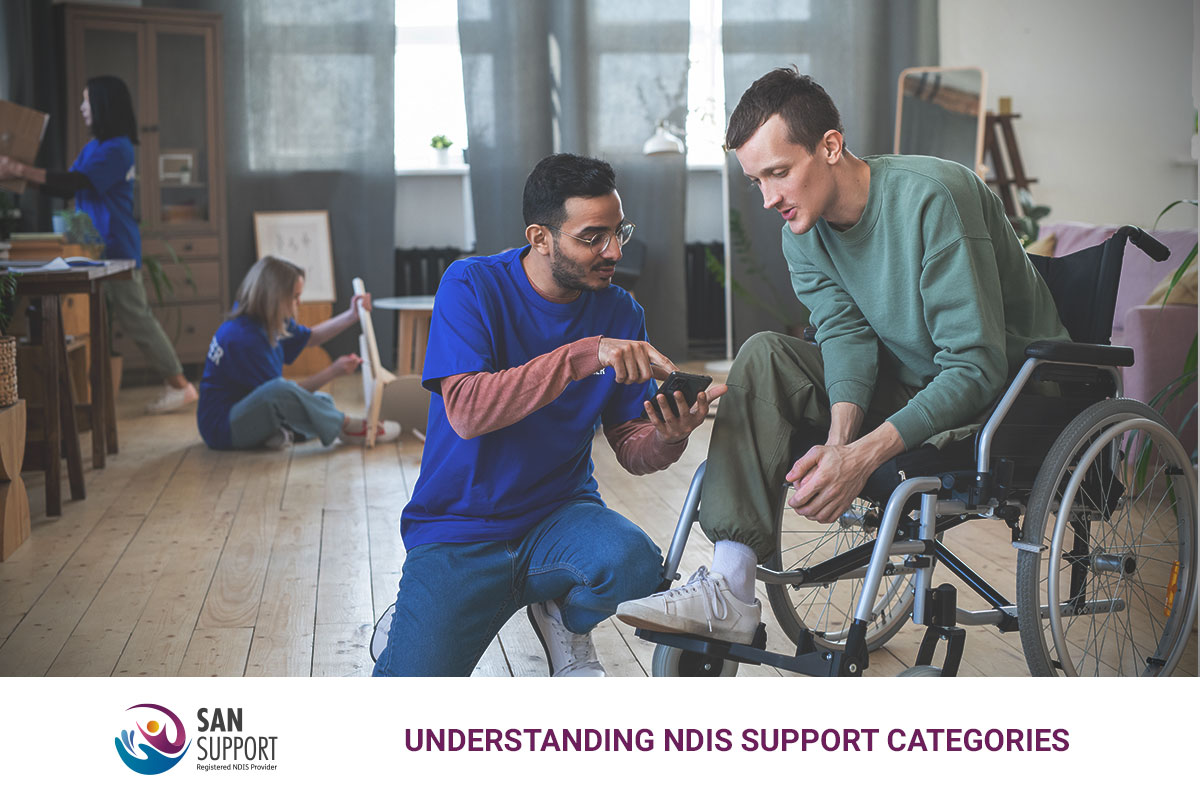
If you are an NDIS participant, understanding how your NDIS funding works is essential. One of the most important parts of your NDIS plan is knowing the NDIS support categories. These categories tell you what types of supports you can access and how you can spend your funding.
The NDIS groups supports into three main categories: Core supports, Capacity Building supports and Capital supports. Each one plays a different role in helping you live more independently, build skills and access the tools or housing you need.
In this article, we’ll explain each support category in simple terms, show how they differ and highlight why they are so important for your NDIS journey.
What Are NDIS Support Categories?
NDIS support categories are groups of funding that outline how you can spend your plan. Each category comes with specific rules and your funding must always meet the NDIS criteria:
- It must directly relate to your disability.
- It must be effective and beneficial for you.
- It must represent value for money.
Not every participant has every category in their plan. Instead, the NDIS tailors your funding to your individual needs and goals.
Now, let’s explore the three key support categories: Core, Capacity Building and Capital.
Core Supports
The Core supports budget helps you with everyday activities. It is the most flexible category of funding and in many cases, you can move funds between sub-categories.
Flexible Core Supports
You can often use flexible Core supports across different areas. These include:
- Assistance with Daily Life: Help with personal tasks such as showering, dressing and preparing meals.
- Social, Economic and Community Participation: Support to join social, recreational or community activities.
- Consumables: Everyday items you need because of your disability, such as continence products or low-cost assistive technology.
- Transport: Travel with a support worker or provider to activities, appointments or community events.
Stated Core Supports
Some Core supports are stated, which means you must use them exactly as described in your NDIS plan. Examples include:
- Supported Independent Living (SIL): Ongoing support to live at home as independently as possible.
- Medium Term Accommodation (MTA): Temporary housing if you are waiting to move into a long-term home.
- Individualised Living Options (ILO): Customised living arrangements with support tailored to your lifestyle.
- Supports for younger people in residential aged care (YPIRAC): Extra daily supports and accommodation funding.
In short, Core supports ensure you can manage day-to-day life and stay connected to your community.
Capacity Building Supports
Capacity Building supports focus on helping you gain new skills, increase independence and worktowards long-term goals. Unlike Core supports, this funding is always stated. That means you can only use it for the specific supports listed in your plan.
Examples of Capacity Building Supports
- Improved Daily Living: Therapies and training such as occupational therapy, physiotherapy or speech therapy.
- Finding and Keeping a Job: Supports for training, assessments and employment preparation.
- Health and Wellbeing: Supports directly related to your disability, such as exercise physiology or nutrition programs.
- Improved Living Arrangements: Assistance with finding and maintaining suitable housing.
- Support Coordination and Psychosocial Recovery Coaching: Guidance to understand your plan and connect with providers.
- Relationships: Supports that help you build positive social and communication skills.
- Lifelong Learning: Assistance to transition from school to further education like TAFE or university.
- Increased Social and Community Participation: Programs that help you develop independence and confidence in the community.
By using your Capacity Building budget, you invest in long-term growth. This funding helps you improve daily skills, strengthen your wellbeing and achieve greater independence.
Capital Supports
The Capital supports budget covers higher-cost items and specialised services. These supports are always stated and cannot be shifted between categories.
Capital Supports May Include:
- Assistive Technology: Mid to high-cost equipment like mobility aids, wheelchairs or communication devices.
- Maintenance and Repairs: Services to keep your assistive technology safe and functional.
- Home Modifications: Structural changes like installing ramps, widening doorways or adapting bathrooms for accessibility.
- Specialist Disability Accommodation (SDA): Specially designed housing for people with very high support needs.
Because Capital supports involve significant costs, the NDIS usually requires professional assessments, quotes and pre-approval before funding is approved.
Why Understanding Support Categories Matters
When you understand how NDIS support categories work, you gain more control over your plan. More importantly, you can:
- Spend your funding wisely and avoid overspending.
- Work with your support coordinator or plan manager to achieve your goals.
- Plan for both your short-term needs and long-term independence.
- Make confident choices about the supports and services you access.
In short, understanding your categories means you can use your plan effectively and live life with more independence.
Conclusion
The three main NDIS support categoriesCore, Capacity Building and Capitaleach play a vital role in your plan. Core supports cover your daily needs, Capacity Building supports help you develop new skills and Capital supports fund high-cost items like assistive technology or home modifications.
By learning how these categories work, you can make the most of your funding and stay on track with your NDIS goals.
About SAN Support
At SAN Support, we are a registered NDIS provider committed to empowering participants across Australia. Our experienced team helps you understand your NDIS plan, navigate support categories and use your funding effectively. With SAN Support, you gain the right guidance, reliable care and a clear path to greater independence.
